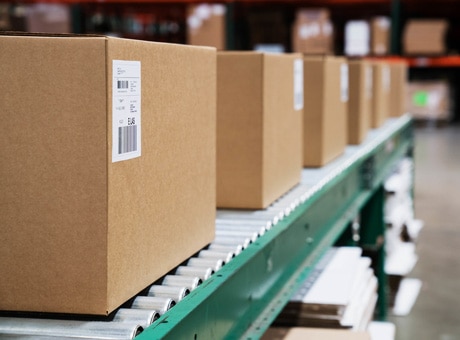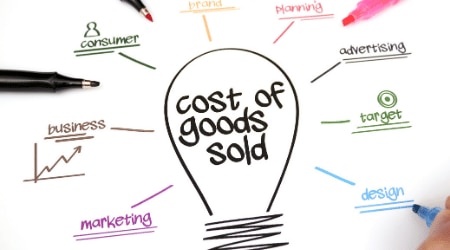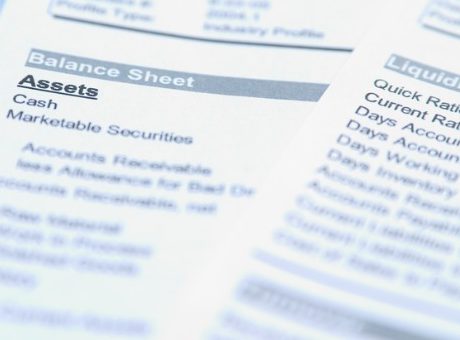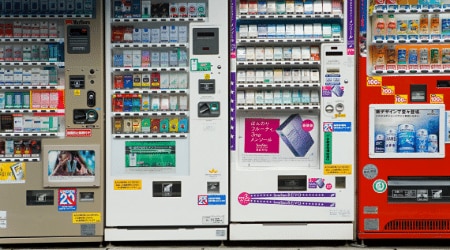In this article, you will learn:

Inventory Types: Types of Inventory and Inventory Management
- What Are Raw Materials?
- Raw Materials Explained
- Using Raw Materials to Manufacture Goods
- Raw Materials and Finished Products
- Raw Materials to Finished Goods Examples
- What is Raw Materials Inventory Management?
- How is the Inventory of Materials Done?
- How Do You Calculate Raw Materials Inventory?
- How to Calculate Raw Material Value With Weighted Average Costing?
- Best Raw Material Inventory Management Techniques
Raw Materials Inventory is an essential resource for your business.
You carry raw materials inventory to meet demand, cover lead time and price increase, and take benefit of quantity discounts.
However, it can prove to be one of the most expensive assets of your business if managed poorly.
Carrying raw materials inventory for longer periods of time can eat away your business profits. This is because the carrying costs like obsolescence, damage, storage, etc. can range between 15% to 40% of your cost of inventory.
Therefore, manufacturers practice lean raw materials inventory. This is done to reduce their waiting time resulting from bottlenecks in production and transportation of such inventory items.
The primary purpose of lean manufacturing is to eliminate waste. Further, there are seven kinds of wastes that any company should get rid of. And the Raw Materials Inventory is one of them.
This is because such inventory sits as a waste if it does not move through the production process. Therefore, you need to manage your raw material inventory. And it should be done in a way that increases your production efficiency and delivers quality goods at a low cost.
In this article, we will discuss what are raw materials, types of raw materials, and how to calculate raw materials inventory.
What Are Raw Materials?
Raw materials are one of the input items used to manufacture finished goods. These are unprocessed materials that you use to manufacture finished goods to be sold to your final consumers. Thus, raw materials are accounted for as one of your inventory assets.
Further, raw materials are also called commodities. This is because they are bought and sold on the Commodities Exchange across the world.
Now, you as a business either buy raw material inventory or extract raw materials yourself. Further, there are two types of raw materials. These include direct and indirect raw materials. Thus, raw materials examples include oil, rubber, steel, grain, corn, natural gas, forest resources, etc.
Raw Materials Explained
As stated earlier, you record raw material as an inventory asset on your business’s balance sheet. Further, you require different types of raw materials to produce varied finished products.
Thus, the type of raw materials your business needs depends upon the type of manufacturing activity you undertake.
For example, if you are a company manufacturing toys, you would need plastic as raw material. Thus, the raw material inventory is accounted for in a proper format on your company’s income statement and balance sheet. This is because the raw material is one of your important inventory items.
Raw Material Inventory Accounting
The manufacturing companies classify inventory into three categories on their balance sheet. These include raw material, work-in-progress, and finished goods.
It must be noted that you record inventory at an all-inclusive value. Such value includes all the costs ranging from preparation, storage, to shipping of the finished goods.
Further, you can purchase inventory on a cash or credit basis. As per the Accrual System of Accounting, you need to record inventory using the following journal entries.
- When Raw Material Inventory is Purchased on Cash
| Particulars | Debit | Credit |
| Raw Material a/c Dr. | XX | |
| To Cash | XX |
The raw material account is debited thus increasing the current assets of your business. Whereas, a credit to the Cash Account signifies an outflow of cash. This reduces the cash balance by the amount of inventory purchased.
- When Raw Material Inventory is Purchased on Credit
| Particulars | Debit | Credit |
| Raw Material a/c Dr. | XX | |
| To Accounts Payable | XX |
Here, debiting the raw material account signifies the increase in the current assets of your business. Whereas, crediting the Accounts Payable implies an increase in your company’s creditors. This is because the raw materials are purchased on credit.
Now, your labor would take raw materials from the warehouse to the place of production in case you run a manufacturing unit. This would require you to record another journal entry depicting the shifting of goods from raw materials to work-in-progress. The journal entry is as follows:
| Particulars | Debit | Credit |
| Work-in-Progress a/c Dr. | ||
| To Raw Material |
Likewise, work-in-progress inventory is shifted to finished goods inventory once the work-in-progress inventory is converted into finished goods. The journal entry is as follows:
| Particulars | Debit | Credit |
| Finished Goods a/c Dr. | XX | |
| To Work-in-Progress | XX |
Direct and Indirect Raw Material
The accounting treatment for raw materials depends upon whether they are direct or indirect raw materials. That is, how such materials would be recorded in the income statement and balance sheet of your company.
- Direct Raw Materials
Direct raw materials are the primary items from which the finished goods are produced. They are the items that can be directly identified with the final product and physically form part of the same. For example, the wood, fabric, etc used in making furniture items like a table, chair, etc. Likewise, wheat flour, eggs, etc used in making bakery items like cookies, toasties, etc.
Accordingly, direct raw materials form part of the current assets of your company. These are recorded as expenses as part of the total cost of goods produced.
The total cost of goods produced is further divided into two parts. The first is the cost of goods sold (COGS) appearing on the income statement. And the second part is the closing inventory appearing on the balance sheet of your company.
Also, direct raw materials are taken as variable costs. This is because the amount of raw material needed varies with the change in the output.
- Indirect Raw Materials
On the other hand, indirect raw materials are the raw materials that cannot be directly traced to the final product. These are simply used in the production process to support the production of finished goods from direct raw materials.
For example polish, nails, etc are used in making the furniture. Likewise, molds, gloves, butter paper, etc used in manufacturing bakery products.
Now, indirect raw material inventory is typically accounted for in the following two ways. It either forms part of manufacturing overheads and is then allocated to COGS. To achieve this, an appropriate method of allocation is used.
In this method, you need to debit the overhead cost and credit the raw material inventory to record indirect raw material.
Then, the total overhead cost is allocated to COGS and ending inventory at the end of the accounting period.
Using Raw Materials to Manufacture Goods
Each production unit undertakes the process of making a raw material into a finished product. That is, it goes in for using raw materials to manufacture goods. Thus, raw materials are the primary inputs that your business makes use of to manufacture finished products. You either extract these materials from minerals, manufacture them on-site, or buy from suppliers.
Further, you decide on the method using which the raw materials would be processed once such materials are selected.
Thus, you need to determine the manufacturing process of making raw material into a finished product. In other words, it is the changing of raw materials into some significant products using various tools, labor, machinery, etc.
Thus, businesses across the world add value by refining and processing the raw material into something more useful. This increase in value enhances the price of the finished good and makes manufacturing activity profitable for the businesses.
However, with time, the process of using raw materials to manufacture goods has changed. On one hand are the conventional processes where finished goods are produced by hand.
These typically include items like furniture, decorative pieces, textiles, etc. On the other hand, there are finished goods produced using sophisticated technology. These include mobile devices, computer hardware, etc.
Raw Materials and Finished Products
What Are Raw Materials?
As stated above, the raw materials are the input items used to manufacture finished goods. These are the items that can be directly traced to the final product and physically form part of the finished item.
Thus, the raw materials are one of the inventory items recorded on your company’s income statement and balance sheet.
Further, the raw materials are divided into direct and indirect raw materials. Such classification would decide the manner in which the raw materials would be accounted for in the books of accounts.
Apart from raw material, the other inventory items include work-in-progress and finished goods.
What Are Finished Products?
A finished product is an inventory item that has been through the entire production process. It is the changing of raw materials into some significant products. These are the products that you ultimately sell to generate business profits.
Accordingly, the manufacturing process involves the following steps in the case of large companies:
- Converting raw materials into work-in-progress and
- Then converting work-in-progress into finished goods.
In the case of such companies, the inventory is recorded in the following manner:
- The raw material account gets debited and the accounts payable accounts get credited. This signifies that the raw materials are purchased on credit.
- These raw materials form part of the work-in-progress. To record this, the Work-in-Progress account is debited and the raw material account is credited.
- Finally, the work-in-progress items are converted into finished goods. To record this, the finished goods account is debited and the work-in-progress account is credited.
But in the case of small companies, the raw materials purchased are directly converted into finished goods. Hence, the raw material account is debited and the finished goods account is credited.
Raw Materials to Finished Goods Examples
Businesses use different types of raw materials to produce finished goods. The raw materials they use as inputs depend upon the type of manufacturing activity they undertake.
The following are some of the common raw materials to finished goods examples:
| Examples of Raw Materials and Finished Products | |
| Raw Materials Examples | Finished Goods |
| Flour | Bakery items including cakes, cookies, bread, etc. |
| Crude Oil | Gasoline, diesel, plastics, polymers, etc. |
| Wood | Furniture items like chairs, tables, sofa sets, cupboards, etc. |
| Plastic | Toys, wire coverings, day-to-day items like containers, chairs, etc. |
| Textiles | Cloth, leather, threads, etc. |
| Stone | Decorative objects, constructions materials, marble sculpture, etc. |
| Metals | Machine and machine parts, tools, electrical components, |
| Rubber | Tyres, tubes, valves, medical instruments, etc. |
| Cotton | Fabric, yarn, threads, etc. |
| Paper | Packaging, printing, writing, wallpaper, filter paper, etc. |
| Glass | Decorative items, optics, tableware, etc |
| Stainless Steel | Pipes, rods, cookware, cutlery, surgical instruments, etc. |
What is Raw Materials Inventory Management?
Raw materials inventory management is an essential part of your business. It refers to the systematized process of sourcing, storing, and utilizing your company’s inventory.
It involves the management of raw materials, components, as well as finished goods. In other words, inventory management involves planning raw materials inventory in such a way that optimum quantities are available at various production stages. That is, the right quantity of raw materials are available at the right time, right place, at the right cost, and at the right level.
Furthermore, raw materials inventory impacts various steps of the supply chain such as manufacturing, warehousing, selling, etc.
Therefore, you should have enough inventory so that various business activities are not adversely affected.
So, raw materials inventory management helps you in:
- Keeping a check over your purchases,
- Storing the optimum quantity of raw materials,
- Overseeing the sale of products and
- Order fulfillment.
Likewise, you should not invest excessive amounts in inventories. This is because excessive raw materials inventory could result in spoilage, damage, theft, obsolescence,etc. Therefore, inventory management is crucial for businesses large and small.
How is the Inventory of Materials Done?
The next question that comes to mind after inventory management is how is the inventory of materials done. Typically, inventory is categorized into the 5 types of inventory categories.
- Raw materials
The raw materials are the unprocessed input items used to manufacture finished goods. They are accounted as inventory assets on the balance sheet of your company. Raw material examples include corn, grains, paper, latex, etc.
- Maintenance, Repair, and Operating (MRO) Inventory
MRO stands for maintenance, Repair, and Operating supplies. It is one of the 5 types of inventory items used to supplement the production process in a manufacturing unit. But, such inventory items do not form part of the finished goods.
Basically, these are materials and supplies that help in running the production process uninterruptedly. Examples of MRO supplies include
- Repair Tools
- Cleaning Supplies
- Office Supplies
- Lab Equipment
- Laptops and computers etc.
Typically, businesses take MRO inventory for granted and do not understand how critical it is to have a proper MRO inventory process in place.
MRO Inventory might form a small part of the COGS. However, improper MRO Inventory can have serious implications.
This may include increased operational difficulties which would mean cost for your business.
Therefore, it is important to have a proper procurement strategy so that the MRO costs do not form a large part of the total manufacturing cost.
- Work-in-progress
The work-in-progress inventory includes the semi-finished goods yet to be completed and resold. These are typically taken as inventory on the factory floor.
Accordingly, work-in-progress inventory is neither raw material used in the production of goods nor it is the finished goods waiting to be sold. Rather these are partially completed items somewhere in the middle. Hence, they are called work-in-progress.
Work-in-progress inventory is accounted as an asset. Furthermore, it includes raw material, labor, and overhead cost.
- Finished Goods
The finished goods inventory refers to the goods ready for sale to the final consumers. That is, such inventory items have gone through the entire production process.
This process includes using raw materials to manufacture goods that are called work-in-progress. The work-in-progress products are then converted into finished goods to be sold to the consumers.
Further, finished goods inventory is calculated using the below mentioned formula:
Finished Goods = Cost of Goods Manufactured – Cost of Goods Sold + Opening Stock
Or
Finished Goods = Purchases + Direct Expenses – Cost of Goods Sold + Opening Stock
Finally, the finished goods are reported together with the raw materials and work-in-progress inventory as total inventory in the balance sheet.
- Packing Materials Inventory
The Packing Materials Inventory is the last out of the 5 types of inventory and includes the inventory items used to pack the goods manufactured. For example, boxes, containers, tubes, etc. all form part of packing materials inventory if you manufacture beauty products.
Similarly, packets, containers, boxes, etc are used to pack the finished product if you manufacture food items.
How Do You Calculate Raw Materials Inventory?
You would need to determine the value of raw materials, work-in-progress, and finished goods irrespective of the size of your manufacturing unit.
The raw materials inventory is nothing but the ending balance of the raw material inventory. So let’s take a look at the example below to understand how raw material inventory is calculated.
Example
- Opening inventory balance $50,000
- Raw material purchased during the year – $100,000
- COGS $80,000
Closing inventory = Opening Inventory + Purchases – COGS = $50,000 + $100,000 – $80,000 = $70,000
How to Calculate Raw Material Value With Weighted Average Costing?
You may use periodic or perpetual inventory systems to record your inventory transactions. We will consider the periodic inventory system for raw materials inventory valuation using the weighted average cost method.
Example
The following are the details that company A provides:
| Particulars | Units | Amount |
| Opening Inventory as on January 2020 | 200 Units @ $200 per unit | $40,000 |
| Quarter 1 Purchases | ||
| Jan 2020 | 200 Units @ $100 per unit | $20,000 |
| Feb 2020 | 300 Units @ $220 per unit | $66,000 |
| March 2020 | 100 Units @ $250 per unit | $25,000 |
| Sales | ||
| Feb End Sold | 150 Units | |
| March End Sold | 100 Units |
Following the Periodic Inventory System, we would now calculate Cost of Goods Available for Sale and units available for sale at the end of Quarter 1.
Weighted Average Cost Per Unit = ($40,000 + $20,000 + $66,000 + $25,000)/(200 + 200 + 300 + 100) = $151,000/800 = $188.75
Now, the company has sold 250 units from January to March. As per Weighted Average Cost Method, we would distribute per unit cost of $188.75 between cost of goods sold and ending inventory.
= Units Sold From January to March x Weighted Average Cost Per Unit
= 250 x $188.75 = $47,187.50
Thus, Ending Inventory = $151,000 – $47,187.50 = $103,812.50
Best Raw Material Inventory Management Techniques
Raw Materials Inventory Management refers to planning for inventory in a way that sufficient quantities of material are available at various production stages.
There are a number of Inventory Management Techniques that you can follow to ensure that there is less wastage and you never go out of stock.
Just In Time (JIT)
It’s an inventory control technique to ensure that the raw materials needed to produce finished goods are made available to the manufacturing unit in time.
You can order raw materials when needed in your manufacturing unit and reduce wastage using this technique. Thus, you free up the working capital locked in inventory and thus reduce inventory cost by ordering inventory when needed.
Car manufacturing units are the best examples of practicing the JIT Inventory management system.
ABC Analysis
This is an inventory management system that helps you to sort inventory items based on the degree of impact they have on the overall inventory cost.
Accordingly, A Class inventory pertains to inventory items high in value but low in quantity. B Class category relates to stock items more or less equal in value or quantity proportionate to the total inventory.
C Class items are in contrast to the A Class items. These are the items that are high in value but low in quantity.
Therefore, the ABC Analysis helps you keep in check A Class items and keep an accurate count of the inventory items.
Economic Order Quantity
Economic Order Quantity or EOQ is an inventory management technique that helps to determine the optimum inventory level at which total inventory cost is minimum. That is, it helps to determine the inventory level where both the Carry Cost and the Order Cost are the least.
Therefore, as a manufacturing unit, you are able to determine the quantity of inventory that you must order at which the cost would be minimum.
- Safety Analysis
- VED Analysis













